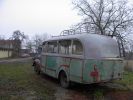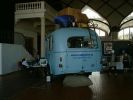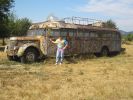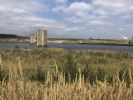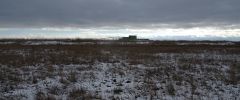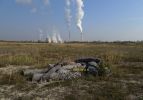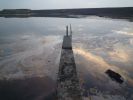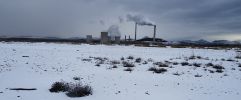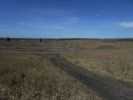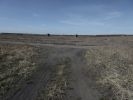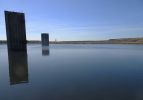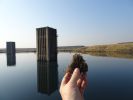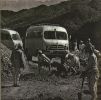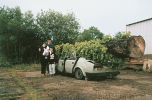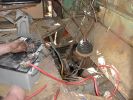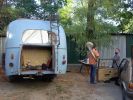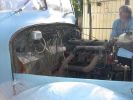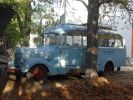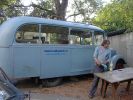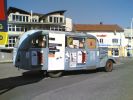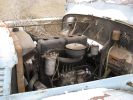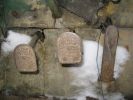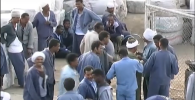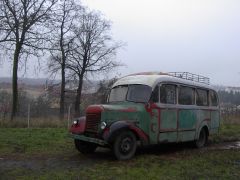The Lost Expedition was an experimental emerging project about communication and mobility. Its goal was to create conditions for a crew of collaborators, such as scientists, artists, technologists, social or environmental activists, by building a moving working platform - a migrating lab. While moving around Eurasia, a small crew (max. 4 people) supposed to record, store and, through satellite communication networks, promote and distribute for the public various current cultural, technological, humanitarian and environmental phenomena and thus promoting a discussion on problems related to the current conditions and situation in specific areas and regions. In 2006 and 2007 the second expedition was planned to cross the African continent.
The idea of the project was presented for the first time to the public by Miloš Vojtěchovský during the Transeuropicnic.org (https://transeuropicnic.org/) international meeting in April 2004 in Novi Sad, Serbia.
The first research trip - (without the MLOK vehicle) with the goal to establish contacts and cooperations with new partners, was realized in the summer of 2004 as an expedition to Central Asia. We could undertake it thanks to a stipend from the Eerste Stiftung - "Tranzit / Display" which was given to M.V. (The expedition team was Dana Recmanová, Miloš Vojtěchovský, Lloyd Dunn and Ken Ganfield).
The vehicle of this effort was primarily conceived as a mobile workspace, which could provide technical equipment and living backstage for the participants. This roving laboratory should employ cheap but advanced communications technologies for gathering and transmitting data from this innovative and unusual diaspora research. The project was especially concerned with how to mediate and to distribute seemingly ambiguous, marginal or superfluous ideas /facts / events / knowledge / patterns.
The Lost Expedition's goal was to detect, collect, archive, link, contextualize, emit and channel these patterns into the existing discourse as well as to initiate new discourse. L.E. presumes a broad interpretation of the term "networking", and serves as a transient model for civic dialogue, addressing questions of liberty, human rights, mobility, ecology, communication, and of humanistic approaches to technology and science. In this respect L.E. was a symbol of a mental seed-data bank, a motorized Ark. L.E. was interested distinctly in creating a multi-layered communication field, bringing the personal and public, banal and anomalous into the same framework. It can also facilitate the creation of new contacts between a variety of geographical and cultural niches, particularly those who are affected by the standardizing and homogenizing effects of globalization.
The Lost Expedition was established around the topics of networks and "meshing". Nevertheless, the concept of network was perceived in the broad range of meaning and touched on, for example, the following topics:
- Free dissemination of information and promoting its gradual slowness
- A research of the relationship between human and more than-human rights
- Transition of mobility and efforts to reduce existing hypermobility
- Searching for convergence between Ecology and Economics
- The apotheosis of appeasement and slowness and searching for methods and strategies to achieve a general slowing down of humankind
- Demilitarization, decolonization and dehumanization of art, technology, science and technoscience
- etc
It is supposed to trace the evolving mental and physical landscape principally within the geographical area of Eastern and Western Europe in the period from 2004, via the itinerant mobile lab, the MLOK Vehicle (The Multifunctional Loco-motivated Oblivion Kit Vehicle).
The project was supervised by The Lost Expedition Brother/Sisterhood, an open, transnational, non-profit body consisting of artists, social activists, journalists, scientists, and other researchers, and a group of individuals who are responsible for constructing, maintaining and operating the content and the technology.
The project was designed and inspired as the result of previous activities of:
Center for metamedia Plasy
Cafe9.net - https://agosto-foundation.org/cafe-9net
pantograph-a-tool-for-mediation
and others.
Partners:
Soros Center for Contemporary Art in Prague,
Academy of Sciences of The Czech Republic,
Technical Faculty of Charles University Prague, FEL
Technical University Brno, FaVU
Institute of Post Virtual Reality, Harrachstal.
Kyzyl Tractor, Almata
Stefan Rusu: Spaces on the run
Liam Young: Unknown Fields Division
etc.
Draft: Prague February 2004, Miloš Vojtěchovský, Douglas Parsons, Lizbeth Rymland
updated by M.V. 2024
A tumbleweed (Kali tragus) - was chosen as a symbol, totem - mash for the Lost Expedition project. The plant is native to Eurasia but in the 1870s, appeared in South Dakota when flaxseed from Russia turned out to be contaminated with Kali seeds. Although it is the best-known of this group of weeds, and was at first thought to be a single well-defined species, it now is known to have included more than one species plus some hybrids. This has led to taxonomic confusion in dealing with species in the genera Salsola and Kali in America. Recent studies show that the population that once was assigned to Salsola tragus really includes three or more morphologically similar species that differ in flower size and shape. The group was widely assigned to the family Chenopodiaceae – including the genera Kali and Salsola – have since been included in the Amaranthaceae. They now are allocated to the Salsoloides, a subfamily of the Amaranthaceae.
A tumbleweed is a structural part of the above-ground anatomy of a number of species of plants. It is a diaspore that, once mature and dry, detaches from its root or stem and rolls due to the force of the wind. In most such species, the tumbleweed is in effect the entire plant apart from the root system, but in other plants, a hollow fruit or inflorescence might detach instead. Xerophyte tumbleweed species occur most commonly in steppe and arid ecosystems, where frequent wind and the open environment permit rolling without prohibitive obstruction.
Apart from its primary vascular system and roots, the tissues of the tumbleweed structure are dead; their death is functional because it is necessary for the structure to degrade gradually and fall apart so that its seeds or spores can escape during the tumbling, or germinate after the tumbleweed has come to rest in a moist location. In the latter case, many species of tumbleweed open mechanically, releasing their seeds as they swell when they absorb water.
The tumbleweed diaspore disperses seeds, but the tumbleweed strategy is not limited to the seed plants; some species of spore-bearing cryptogams—such as Selaginella—form tumbleweeds, and some fungi that resemble puffballs dry out, break free of their attachments and are similarly tumbled by the wind, dispersing spores as they go. Many tumbleweeds establish themselves on broken soil as opportunistic agricultural weeds.
(source: Wikipedia)



